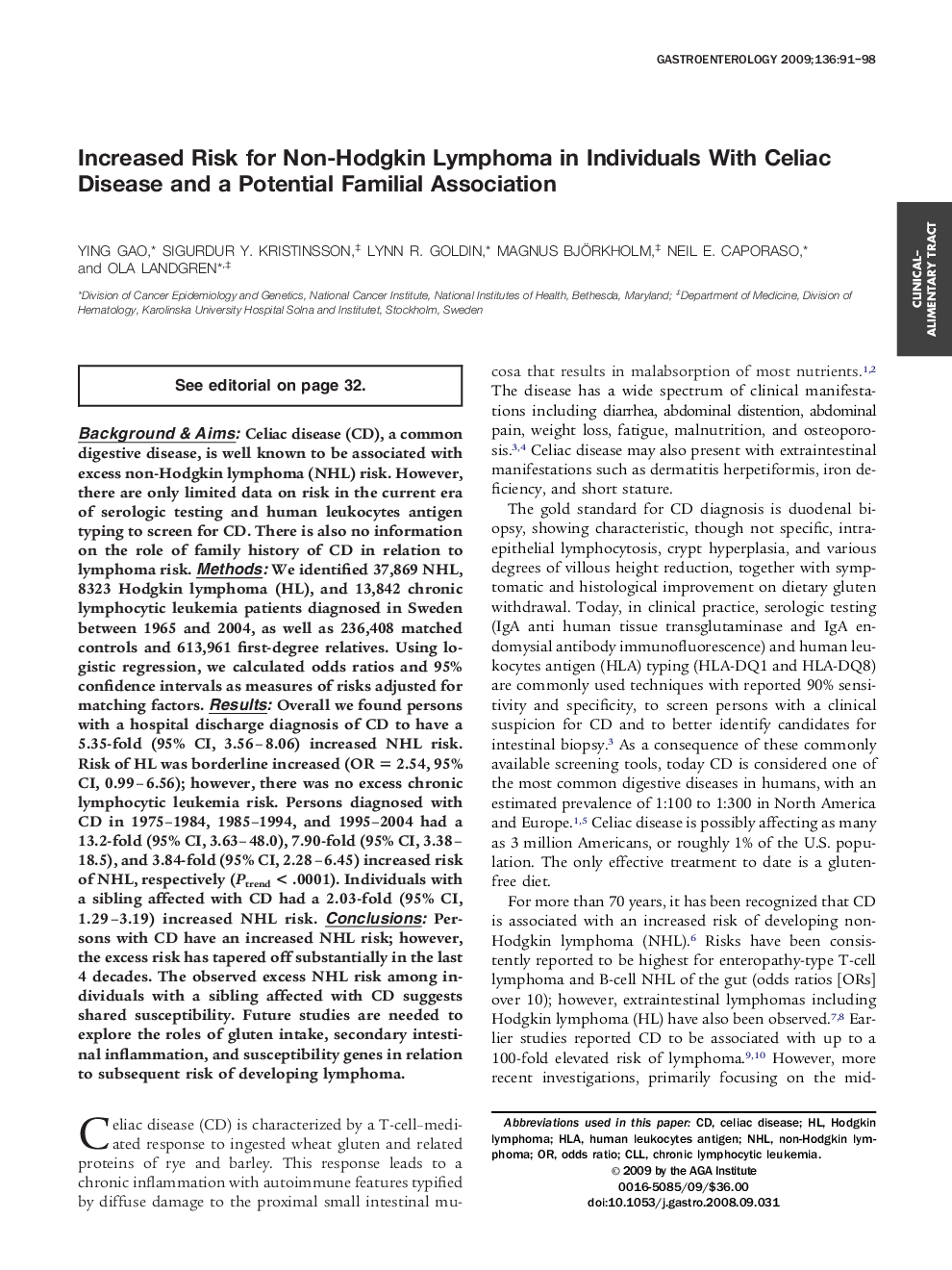| Article ID | Journal | Published Year | Pages | File Type |
|---|---|---|---|---|
| 3298871 | Gastroenterology | 2009 | 8 Pages |
Background & AimsCeliac disease (CD), a common digestive disease, is well known to be associated with excess non-Hodgkin lymphoma (NHL) risk. However, there are only limited data on risk in the current era of serologic testing and human leukocytes antigen typing to screen for CD. There is also no information on the role of family history of CD in relation to lymphoma risk.MethodsWe identified 37,869 NHL, 8323 Hodgkin lymphoma (HL), and 13,842 chronic lymphocytic leukemia patients diagnosed in Sweden between 1965 and 2004, as well as 236,408 matched controls and 613,961 first-degree relatives. Using logistic regression, we calculated odds ratios and 95% confidence intervals as measures of risks adjusted for matching factors.ResultsOverall we found persons with a hospital discharge diagnosis of CD to have a 5.35-fold (95% CI, 3.56–8.06) increased NHL risk. Risk of HL was borderline increased (OR = 2.54, 95% CI, 0.99–6.56); however, there was no excess chronic lymphocytic leukemia risk. Persons diagnosed with CD in 1975–1984, 1985–1994, and 1995–2004 had a 13.2-fold (95% CI, 3.63–48.0), 7.90-fold (95% CI, 3.38–18.5), and 3.84-fold (95% CI, 2.28–6.45) increased risk of NHL, respectively (Ptrend < .0001). Individuals with a sibling affected with CD had a 2.03-fold (95% CI, 1.29–3.19) increased NHL risk.ConclusionsPersons with CD have an increased NHL risk; however, the excess risk has tapered off substantially in the last 4 decades. The observed excess NHL risk among individuals with a sibling affected with CD suggests shared susceptibility. Future studies are needed to explore the roles of gluten intake, secondary intestinal inflammation, and susceptibility genes in relation to subsequent risk of developing lymphoma.
